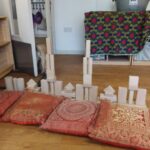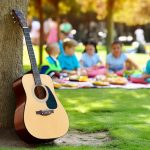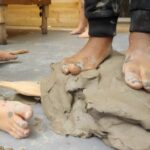Inspection Report
| Unique Reference Number | 108901 |
|---|---|
| Local Authority | Bristol, City of |
| Inspection number | 324859 |
| Inspection date | 21 January 2009 |
| Reporting inspector | Christine Huard |
This inspection of the school was carried out under section 5 of the Education Act 2005.
The registered childcare, managed by the governing body, was inspected under section 49 of the Childcare Act 2006.
| Type of school | Nursery |
|---|---|
| School category | Community |
| Age range of pupils | 0–4 |
| Gender of pupils | Mixed |
| Number on roll | |
| School (total) | 54 |
| Childcare provision for children aged 0 to 3 years | 38 |
| Appropriate authority | The governing body |
| Chair | Sally Maxwell |
| Headteacher | Lucy Driver |
| Date of previous school inspection | 9 May 2006 |
| Date of previous childcare inspection | Not previously inspected |
| School address | Little Bishop Street |
| St Pauls | |
| Bristol BS2 9JF | |
| Telephone number | 01179 030337 |
| Fax number | (sic)01179 030337 |
| Age group | 0–4 |
|---|---|
| Inspection date | 21 January 2009 |
| Inspection number | 324859 |
Inspection report St Pauls Nursery School and Childrens Centre, 21 January 2009
© Crown copyright 2009
Website: http://www.ofsted.gov.uk/
This document may be reproduced in whole or in part for non-commercial educational purposes, provided that the information quoted is reproduced without adaptation and the source and date of publication are stated.
Further copies of this report are obtainable from the school. Under the Education Act 2005, the school must provide a copy of this report free
of charge to certain categories of people. A charge not exceeding the full cost of reproduction may be made for any other copies supplied.
Introduction
The inspection was carried out by two Additional Inspectors, who evaluated the overall effectiveness of the school and investigated the following issues: the success of strategies to promote language for pupils learning English as an additional language and those identified as having problems with language for communication; the effectiveness of strategies for behaviour management and conflict resolution in order to ensure all children are able to learn effectively; and the success of shared leadership across the whole setting and the impact of this in improving services for children, families and the community as a whole.
Evidence was gathered from: the school’s self-evaluation; the school’s assessment records; observation of the school at work; discussions with staff, parents and governors; and analysis of parental questionnaires. Other aspects of the school’s work were not investigated in detail, but the inspectors found no evidence to suggest that the school’s own assessments, as given in its self-evaluation, are not justified. These have been included where appropriate in this report.
Description of the school
St Paul’s Nursery School and Children’s Centre is in an area of severe social and economic disadvantage. The Children’s Centre was established in September 2008, having previously operated as a nursery school. It is currently on a temporary site whilst a purpose-built centre is constructed on the site of the old nursery school. Children come from a diverse range of cultures and backgrounds. The largest group is from Black or Black British-African heritage families. Nearly all the children speak English as an additional language. The centre runs a range of parent and baby sessions as well as a variety of parent groups. The school offers a wide range of extended services through the development of the Children’s Centre.
Key for inspection grades
| Grade 1 | Outstanding |
|---|---|
| Grade 2 | Good |
| Grade 3 | Satisfactory |
| Grade 4 | Inadequate |
Overall effectiveness of the school |
Grade: 1 |
|---|
St Paul’s Nursery School and Children’s Centre makes outstanding provision for all the children who attend. The main reasons for its success are the visionary approach and exceptional commitment of the headteacher, which inspire and motivate the senior leaders and adults working with her. The style of shared leadership has ensured that the whole team has established a setting with the same high expectations for children, their families and the local community, as the nursery school from which the centre has evolved. Staff have been deployed with great expertise so that those who need to refine their practice to meet the high expectations and challenges have been able to do so with the support and expertise of fellow professionals.
Every child is valued as an individual. An excellent induction programme means that every one has a happy, and meticulously planned, start to his or her education and the maximum chance to flourish in a stimulating and exciting atmosphere. Parents value the support they receive and excellent relationships are established through a system of home visits, a range of parenting classes and therapy classes such as baby massage and ‘bumps and babes’.
Because of the high levels of care and security, babies and toddlers learn confidently. Key workers make great efforts to get to know them and their families really well and this ensures that the needs of every individual are closely met. Exceptional understanding of the needs of all children ensures that there are plenty of stimuli to learn. There are enough activities to interest and excite them – but not so many as to bewilder them. Activities are carefully planned so that even the youngest children have the opportunities to explore and learn. Little ones learned that chalky water when it dries leaves a white residue – and several were excitedly viewing their white faces in a mirror. For the two- and three-year-olds, activities are provided that require longer periods of concentration and guidance. These are a little more structured so that, for example, they learn how to dress themselves suitably for play outside and are learning to become independent in looking after their personal hygiene.
The school has fulfilled the promise it showed at the previous inspection, when it was deemed to be ‘well on the way to becoming an outstanding school’. Children enter at levels considerably lower than those typically expected from children of a similar age. A well-planned, stimulating and exciting curriculum supports their learning exceptionally well. The quality of teaching and learning is outstanding. The detailed information from observations and excellent assessment data are used exceptionally well to plan the next steps in each child’s learning, play and development. This responsive planning means that all children can build on what they already know and make excellent progress in their learning and development. In a school where English is an additional language for nearly all children, high levels of support are provided. This provision is of exceptionally high quality and ensures that children’s learning and understanding is rapidly accelerated. Resources such as culturally appropriate alphabets and feelings cards, the use of signing and non-verbal communication when it is appropriate, all ensure that the needs of every single child are effectively met. As a result, when children leave the school they are working well within the levels expected for children who are four years old. Through its excellent assessment system, the school had identified a group of ‘invisible learners’ , who were not making as much progress, particularly with their language and communication skills, as might have been expected. As a result of focused activities and small group work these children have made significant progress in all areas of their learning and are now achieving as outstandingly well as their peers. Those who have learning difficulties and/or disabilities make excellent progress, relative to their starting points and capabilities.
The school is currently undergoing substantial building work. However, on entering, one is instantly struck by the warm and stimulating atmosphere. The rooms are filled with beautiful and vibrant displays of children’s work. Learning stories provide vivid examples of how high expectations for children’s achievement are, and how very effectively they are learning. Excellent use is made of the somewhat limited outdoor space whilst the extensive building works are in progress, and children still have opportunities to engage in the free flow of activities whenever it is safe to do so. The children love coming to school and this is evident in the happy, smiling faces that greet you wherever you go. Their personal development and well-being are outstanding. Children are taught about the rudiments of healthy eating and this is reinforced by the excellent meals provided for them by the school-run kitchen. Parents are particularly appreciative of the practical assistance for them in the form of healthy ideas for packed lunches. The stepping stones for conflict resolution are an excellent aide to behaviour management and all the older children understand how these can be used to help them work through any problems they have. As a result, behaviour is excellent and children learn to share, take turns and work and play collaboratively.
This is a school where cultural diversity is welcomed and celebrated. Children from a wide range of cultures, backgrounds and faiths work and play together in harmony. The promotion of community cohesion is a top priority and is excellent in every respect. The school has extensive links both nationally and internationally. The school is fully inclusive and many parents positively commented on this. One comment reflected the views of many: ‘It is helping people to grow together, showing how we are the same yet different and how important it is to respect everybody.’
Parents are delighted with the school. The system of leadership ensures that time and effort are spent getting to know families. As a result, parents and carers find staff ‘considerate and caring’, and ‘hugely patient with my constant demands, views and questions’. They feel that the leaders are ‘doing a great job, exceptional care is taken of the children’. The care and welfare of the children is top priority and as a result children blossom. There is a systematic and rigorous approach to safeguarding which protects children and reassures parents. Adults are particularly vigilant in enabling children to learn how to keep themselves safe, and the quality of supervision, particularly for outdoor play, is exceptionally high. The fact that children are safe, secure and happy contributes to their ability to become successful learners. There are outstanding links with a wide range of outside agencies and these provide very high levels of support for children and their parents.
The school’s self-evaluation was modest in some of its gradings, but totally accurate in assessing its overall effectiveness as outstanding. Self-evaluation is ongoing and the headteacher and her two assistant headteachers are always looking to where improvements can be made; the capacity for carrying these through is oustanding. The improvements made by the ‘invisble learners’ is just one illustration of this. The governors are extremely knowledgable and supportive, and monitored the nursery school highly effectively. However, they have not yet had training in how they can extend the quality of this monitoring to the centre as a whole, in order to support the headteacher and her staff even better and help the centre go from strength to strength. As one parent wrote, ‘This school does a wonderful job.’
What the school should do to improve further
- Provide additional training for governors so that they are able to monitor the provision made by the whole centre as effectively as they monitored the provision in the nursery school.
| Any complaints about the inspection or the report should be made following the procedures set out in the guidance ‘Complaining about inspections’, which is available from Ofsted’s website: http://www.ofsted.gov.uk/ |
|---|
Annex A
Inspection judgements
| Key to judgements: grade 1 is outstanding, grade 2 good, grade 3 satisfactory, and grade 4 inadequate. | School Overall |
|---|
Overall effectiveness
| How effective is the provision in meeting the needs of children in the EYFS? | 1 |
|---|---|
| Effective steps have been taken to promote improvement since the last inspection | Yes |
| How well does the school work in partnership with others to promote learners’ well being? | 1 |
| The capacity to make any necessary improvements | 1 |
Achievement and standards
| How well do children in the EYFS achieve? | 1 |
|---|---|
| The standards¹ reached by learners | 3 |
| How well learners make progress, taking account of any significant variations between groups of learners | 1 |
| How well learners with learning difficulties and/or disabilities make progress | 1 |
Personal development and well-being
| How good are the overall personal development and well-being of the children? | 1 |
| The extent of learners’ spiritual, moral, social and cultural development | 1 |
| The extent to which learners adopt healthy lifestyles | 1 |
| The extent to which learners adopt safe practices | 1 |
| The extent to which learners enjoy their education | 1 |
| The attendance of learners | 2 |
| The behaviour of learners | 1 |
| The extent to which learners make a positive contribution to the community | 1 |
| How well learners develop workplace and other skills that will contribute to their future economic well-being | 1 |
The quality of provision
| How effectively are children in the EYFS helped to learn and develop? | 1 |
|---|---|
| How effectively is the welfare of the children in the EYFS promoted? | 1 |
Leadership and management
| How effectively is provision in the EYFS led and managed? | 1 |
|---|---|
| How effectively leaders and managers at all levels set clear direction leading to improvement and promote high quality of care and education |
1 |
| How effectively leaders and managers use challenging targets to raise standards | 1 |
| The effectiveness of the school’s self-evaluation | 1 |
| How well equality of opportunity is promoted and discrimination eliminated | 1 |
| How well does the school contribute to community cohesion? | 1 |
| How effectively and efficiently resources, including staff, are deployed to achieve value for money | 1 |
| The extent to which governors and other supervisory boards discharge their responsibilities | 2 |
| Do procedures for safeguarding learners meet current government requirements? | Yes |
| Does this school require special measures? | No |
| Does this school require a notice to improve? | No |
1 Grade 1 – Exceptionally and consistently high; Grade 2 – Generally above average with none significantly below average; Grade 3 – Broadly average to below average; Grade 4 – Exceptionally low.
Annex B
Text from letter to pupils explaining the findings of the inspection
22 January 2009
Dear Children
Inspection of St Paul’s Nursery School and Children’s Centre, Lower Bishop Road, Bristol BS2 9JF
Thank you for the wonderful day we spent at your school. We really enjoyed seeing all the exciting things you do. Your school and Children’s Centre are really outstanding and we can see why you all enjoy going to school so much. These are some of the things that are particularly excellent:
- You all get on together really well and are learning to share and take turns. You do really well in all your activities.
- The adults all take exceptionally good care of you; they look after you all really well so you feel very safe in school.
- You have excellent teachers and helpers who make your learning interesting and fun.
- Your headteacher and people who help to run the centre are making an excellent job of this, which means that you learn all the right things as well as having a really good time.
- Your teachers work really hard with your mums, dads and carers to make sure that your time at school is as happy as it can be and that you learn really well.
The headteacher and staff have many good ideas to make the school even better. We agree with these. We also think that it would be good for the governors to find out exactly what they need to be looking at so that they can help your headteacher and adults run the school even more effectively.
We had a lovely day at your school and really enjoyed seeing you all.
Christine Huard
Lead inspector





